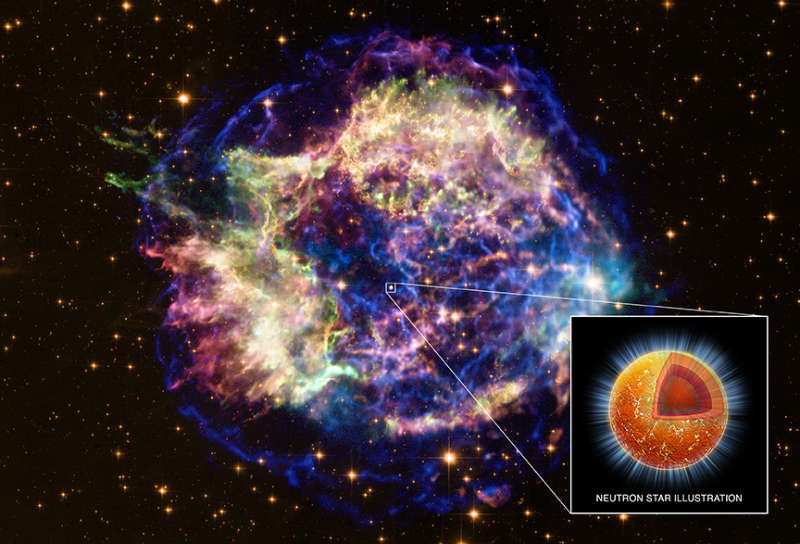
|
Credit & Copyright: NASA/CXC/M.Weiss)
Explanation:
Supernova remnant
Cassiopeia A (Cass A) is a
comfortable
11,000 light-years away.
Light from the Cass A supernova,
the death explosion of a massive star,
first reached Earth just 330 years ago.
The expanding debris cloud spans about 15 light-years in
this composite
X-ray/optical image,
while the bright source near the center is a
neutron star
(inset illustration)
the incredibly dense, collapsed remains of the stellar core.
Still hot enough to emit X-rays, Cass A's neutron star is cooling.
In fact, 10 years of observations with the orbiting
Chandra X-ray observatory find that
the
neutron star is cooling
rapidly, so rapidly that researchers suspect a large part of
the neutron star's core is forming a frictionless
neutron superfluid.
The Chandra results represent the first observational evidence for this
bizarre state of matter.
|
January February March April May June July August September October November December |
| ||||||||||||||||||||||||||||||||||||||||||||||||
NASA Web Site Statements, Warnings, and Disclaimers
NASA Official: Jay Norris. Specific rights apply.
A service of: LHEA at NASA / GSFC
& Michigan Tech. U.
Based on Astronomy Picture
Of the Day
Publications with keywords: supernova remnant - Cas A - neutron star
Publications with words: supernova remnant - Cas A - neutron star
See also:
- APOD: 2025 October 1 Á NGC 6960: The Witchs Broom Nebula
- APOD: 2025 September 3 Á Cir X1: Jets in the Africa Nebula
- APOD: 2025 June 9 Á Between Scylla and Charybdis: A Double Cosmic Discovery
- Supernova Remnant Cassiopeia A
- APOD: 2025 January 8 Á Supernova Remnants Big and Small
- APOD: 2024 September 18 Á The Mermaid Nebula Supernova Remnant
- APOD: 2024 April 16 Á Filaments of the Vela Supernova Remnant
